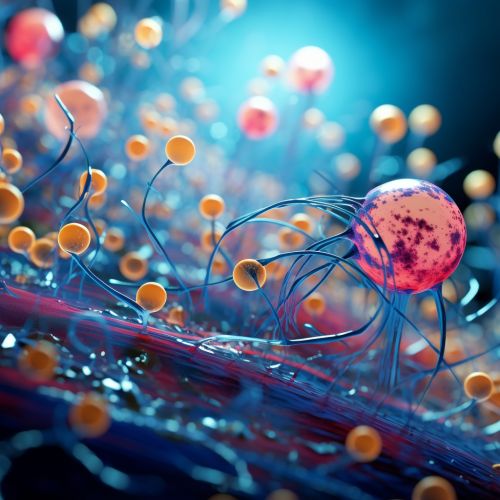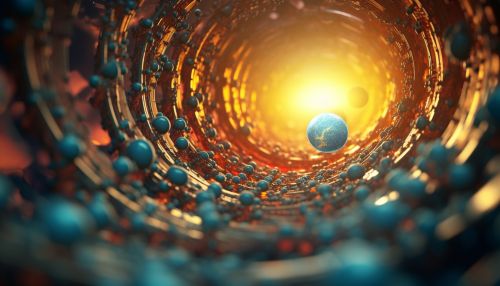Protein Synthesis
Introduction
Protein synthesis is a biological process that allows individual cells to build specific proteins. Both DNA and RNA are involved in this process, which is initiated in the cell's nucleus. The actual synthesis of proteins takes place in the cell cytoplasm, specifically on the ribosomes.
Genetic Code and Transcription
The genetic code is the set of rules that defines how a sequence of nucleotide triplets, also known as codons, specify which amino acid will be added next during protein synthesis. The genetic code can be found in the DNA sequence of the cell. During transcription, a DNA sequence is read by an RNA polymerase, which produces a complementary, antiparallel RNA strand called a primary transcript.
Transcription is the first step of protein synthesis. It involves copying a gene's DNA sequence to make an RNA molecule. Transcription is performed by enzymes called RNA polymerases, which link nucleotides to form an RNA strand (using a DNA strand as a template).
Translation
Translation is the second step of protein synthesis. The mRNA produced during transcription is translated into a sequence of amino acids to form a protein. Translation occurs in the cytoplasm where the ribosomes are located. Ribosomes are made of a small and large subunit that surround the mRNA. In translation, messenger RNA (mRNA) is decoded to produce a specific polypeptide according to the rules specified by the trinucleotide genetic code.
Protein Folding and Post-translational Modifications
After translation, the protein passes into the channels of the rough endoplasmic reticulum (ER) for transportation. The protein is then passed from the rough ER to the Golgi apparatus inside tiny 'sacs' called vesicles, where it undergoes further modifications.
Protein folding is the physical process by which a protein chain acquires its native 3-dimensional structure. Post-translational modifications include the addition of functional groups including acetate, phosphate, various lipids and carbohydrates, changing the chemical nature of an amino acid, or making structural changes such as formation of disulfide bridges.
Post-translational modification is the chemical modification of a protein after its initial translation. It is one of the later steps in protein biosynthesis for many proteins.
Regulation of Protein Synthesis
The regulation of protein synthesis is critical for the proper functioning of cells. It is influenced by a variety of factors including nutrient availability, energy status of the cell, stress levels, and signaling molecules. The regulation of protein synthesis can occur at different stages of the process including transcription, translation, and post-translational modification.


